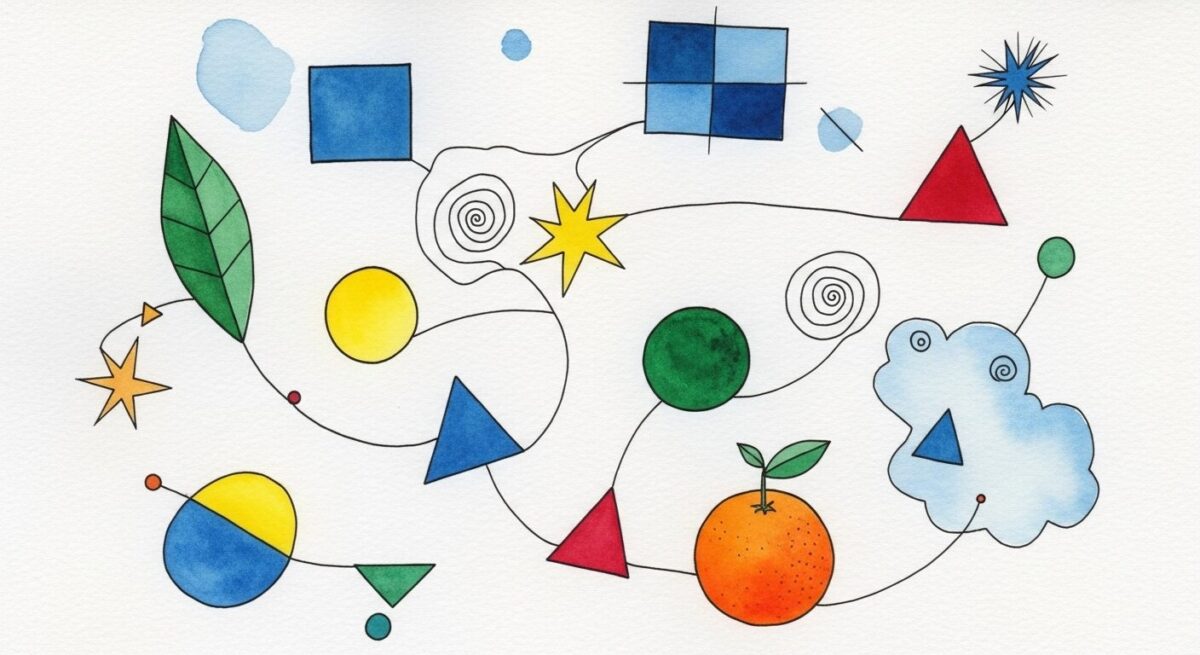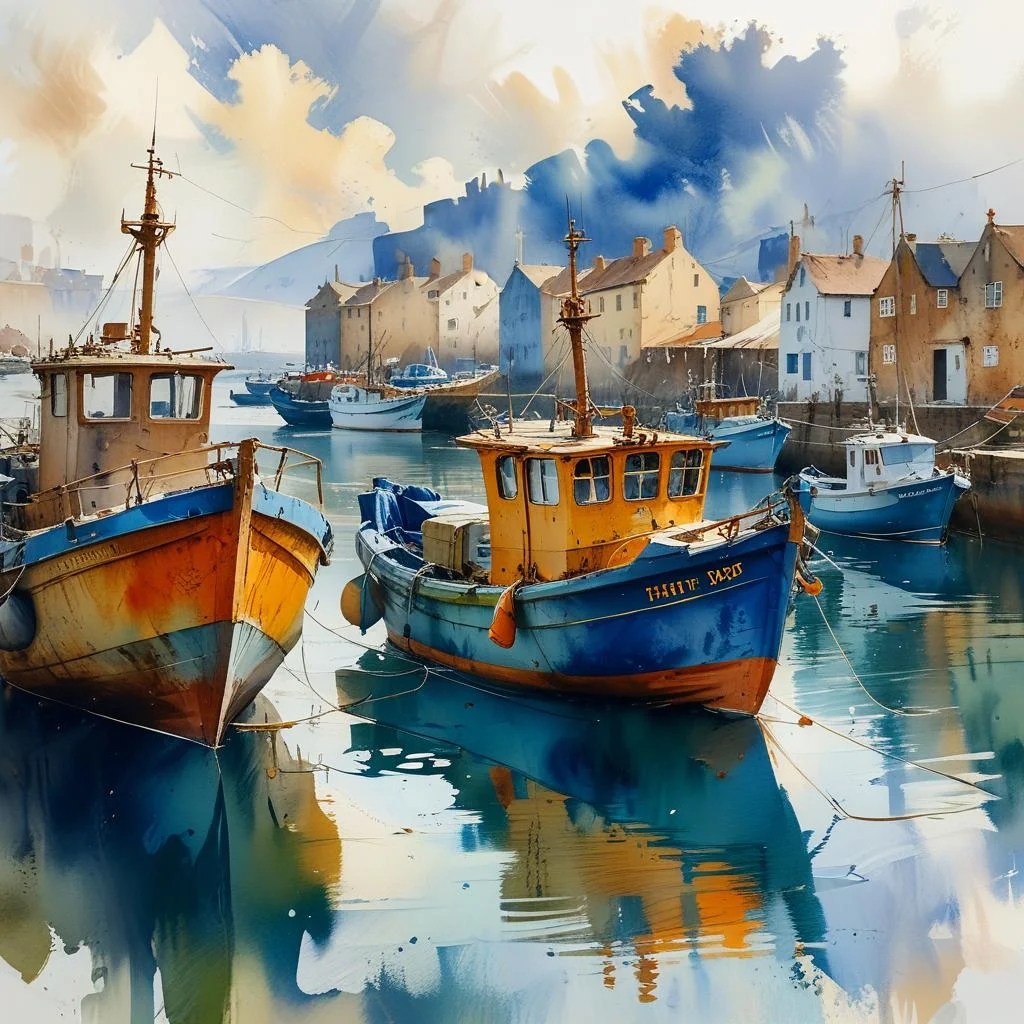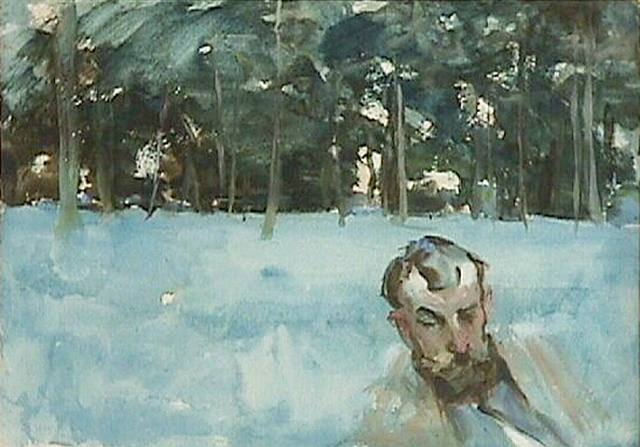Discover the enchanting world of Paul Klee’s art, particularly his watercolors, where simple shapes and vibrant hues dance together to create a visual symphony. Paul Klee, a Swiss-German artist, was a master of turning the ordinary into the extraordinary, and his watercolor paintings are a testament to his playful and profound genius. He wasn’t just a painter; he was a musician, a teacher, and a philosopher who saw art as a way to make the invisible visible, often through a unique whimsical art style.
This post will take you on a journey through Klee’s innovative techniques, his revolutionary use of color, and the stories behind some of his most famous watercolor masterpieces, all contributing to his distinctly playful and imaginative aesthetic. Prepare to be inspired by an artist who believed that a line is simply a dot that went for a walk.
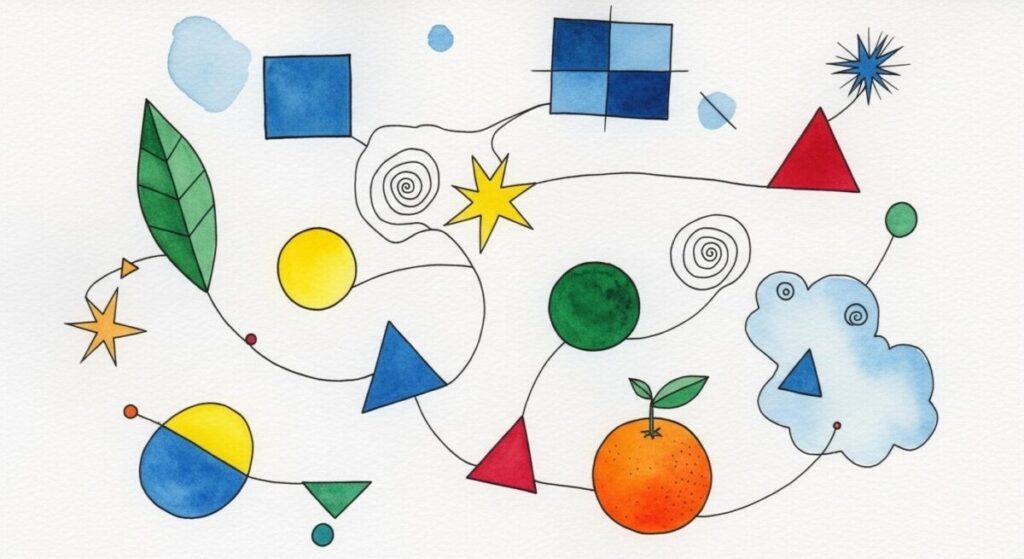
Key Points: The Essence of Klee’s Whimsical Art Style
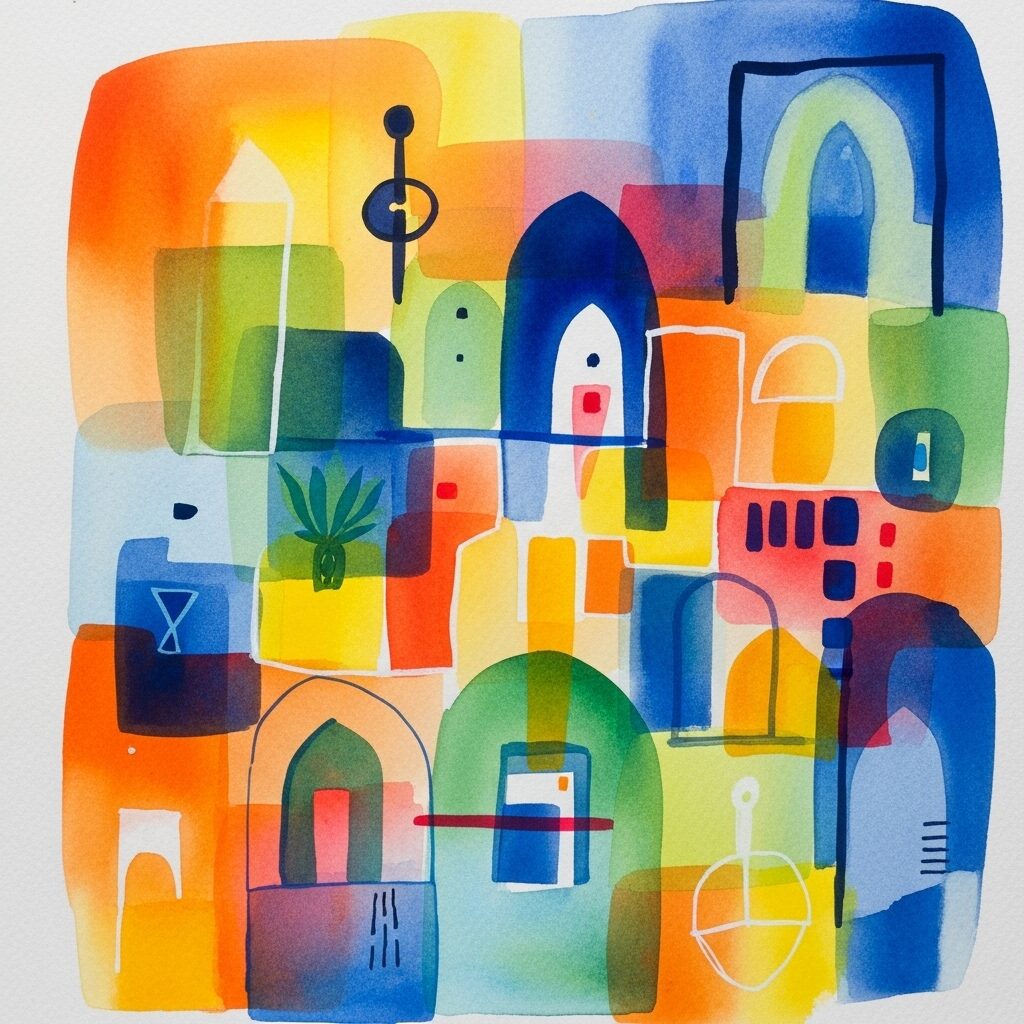
- A World of Whimsy and Wonder: Klee’s watercolors are renowned for their dreamlike and often childlike qualities. He drew inspiration from a variety of sources, including children’s art, to create a unique visual language that is both simple and deeply meaningful, embodying a true whimsical art style.
- The Power of Color: A trip to Tunisia in 1914 was a turning point for Klee. The vibrant light and colors of North Africa awakened his sense of color, which he began to use independently of physical description, a significant step towards abstraction that liberated his palette to create increasingly whimsical art.
- Innovative Techniques: Klee was a true innovator, constantly experimenting with different materials and methods. He would often combine watercolor with other media and paint on various surfaces to achieve unique textures and effects, all serving his playful and inventive approach to art-making, characteristic of his whimsical art style.
- The Bauhaus Influence: As a teacher at the famous Bauhaus school, Klee developed and shared his theories on color and form. This experience profoundly influenced his own work, leading to the creation of some of his most iconic paintings that, despite their underlying structure, maintained a delightful quirky art style.
“Art does not reproduce the visible; rather, it makes visible.”
Paul Klee
Paul Klee’s approach to watercolor was anything but traditional. He saw it as a medium of discovery, a way to explore the world around him and the world within. His work, defined by its whimsical art style, invites us to look beyond the surface and to find the magic in the everyday. Whether you are an aspiring artist or simply someone who appreciates beautiful things, the world of Paul Klee’s watercolors has something to offer you.
From Monochrome to Master of Color: Klee’s Artistic Journey
Born in Switzerland in 1879, Paul Klee was a talented musician from a young age. However, he ultimately chose to pursue a career in the visual arts. In his early years as an artist, Klee struggled with color. He worked almost exclusively in black and white for a long period, honing his skills as a draftsman. His early works show a fascination with satire and the grotesque, often rendered with a sharp, linear quality.
Everything changed in 1914 when Klee traveled to Tunisia with his fellow artists August Macke and Louis Moilliet. The intense North African light and the vibrant colors of the landscape had a profound impact on him. It was here that he famously declared,
“Color and I are one. I am a painter.”
This trip was a pivotal moment in his artistic development. He began to use color with newfound confidence and freedom, creating works that were a celebration of light and hue, allowing his playful and whimsical art style to truly flourish. To learn more about how travel can inspire artists, check out our post on how location influenced art.
The Bauhaus Years: A Laboratory for Ideas

In 1921, Walter Gropius, the founder of the influential Bauhaus school of art and design, invited Klee to become a teacher. The Bauhaus was a hub of creativity and innovation, and it provided Klee with the perfect environment to further develop his artistic theories. During his ten years at the Bauhaus, he meticulously documented his ideas on color and form in a series of notebooks, which are now considered to be some of the most important theoretical writings in modern art. His teachings, even while systematic, provided the framework for his unique, whimsical art style, influencing a generation of artists and designers. The experience of teaching, in turn, enriched his own artistic practice. For those interested in the fundamentals of art, our beginner’s guide to famous artist styles offers more insight into different artistic approaches.
Klee’s Watercolor Techniques: A Blend of Precision and Playfulness
Paul Klee was a master of various watercolor techniques, often combining them in unconventional ways to create his desired effects. He was not bound by traditional rules and was always experimenting with new materials and methods. This constant experimentation was key to his whimsical art style. One of his signature techniques was the use of transparent layers of color, which he would build up to create a sense of depth and luminosity, giving his works a dreamlike, playful quality. He was also a master of line, using it to create a sense of movement and rhythm in his compositions, often in a simple, childlike manner that defines his aesthetic.
Klee often incorporated drawing into his watercolors, using pen and ink to create a framework for his color explorations. This combination of drawing and painting is a hallmark of his style, contributing to its distinct charm. He also experimented with a technique called “oil transfer,” where he would draw on a piece of paper coated with oil paint and then transfer the drawing onto another surface. This technique gave his lines a unique, slightly blurred quality, further enhancing the dreamlike and whimsical art style of his works. To explore other artistic techniques, you might enjoy our article on mastering texture painting techniques.
A Symphony of Shapes and Colors: Famous Paul Klee Watercolors
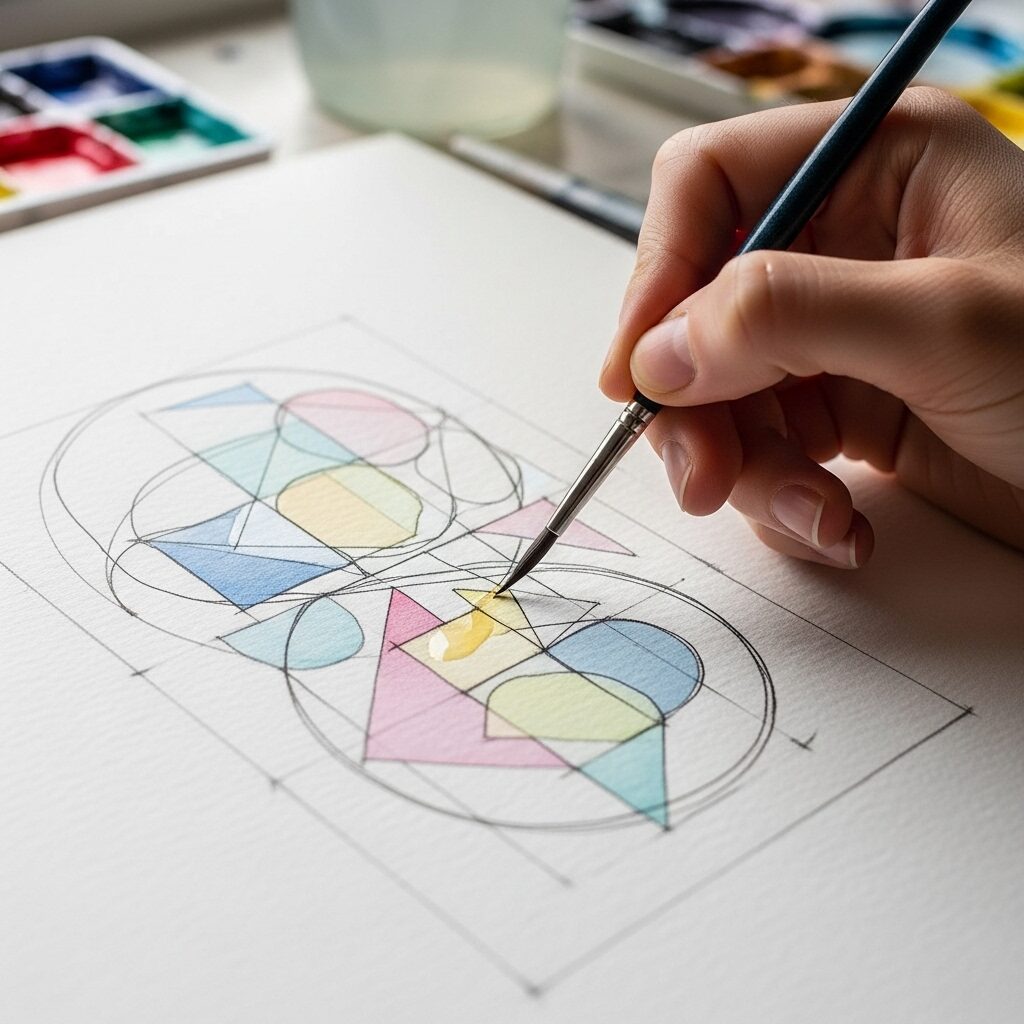
These are just a few examples of the many incredible watercolor paintings that Paul Klee created during his lifetime, each one a testament to his unique vision and extraordinary talent, showcasing his whimsical art style.
| Painting Name | Year | Significance |
| Castle and Sun | 1928 | A beautiful example of Klee’s use of simple geometric shapes and a harmonious color palette to create a sense of balance and wonder, adding to its overall playful charm. |
| The Twittering Machine | 1922 | This iconic and slightly unsettling work perfectly combines whimsical bird-like creatures with a stark, mechanical structure, showcasing Klee’s interest in the relationship between nature and technology in a fanciful way. |
| Ad Parnassum | 1932 | A masterpiece of Klee’s later period, this painting is a complex mosaic of colored squares that demonstrates his mastery of color theory and his unique pointillist technique, rendered with playful precision. |
| Fish Magic | 1925 | A magical and dreamlike underwater scene, this painting is a celebration of Klee’s imaginative power and his ability to create a sense of mystery and enchantment, epitomizing his whimsical art style. |
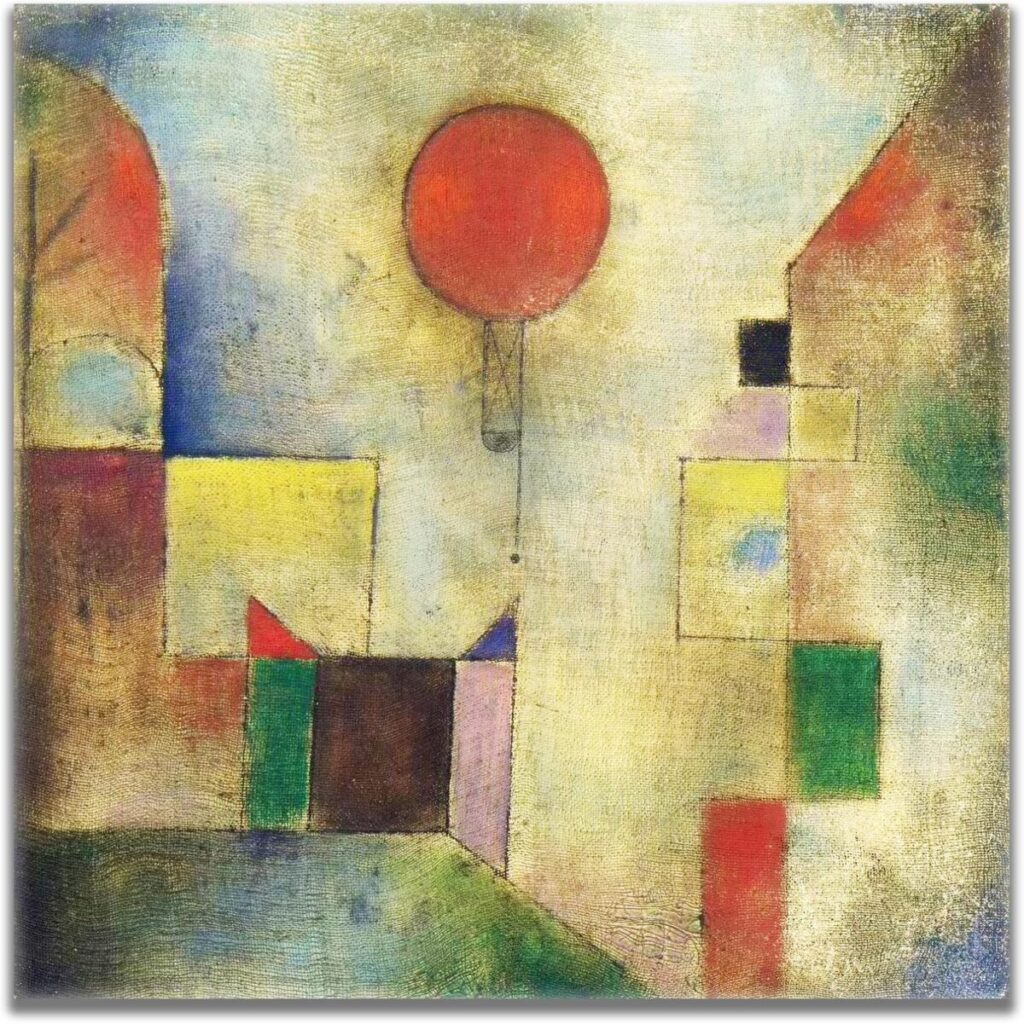
If you’re interested in learning how to paint, our guide on getting started with watercolors is a great resource.
Klee’s Enduring Legacy
Paul Klee’s influence on the art world is immeasurable. His work, with its distinctive whimsical art style, helped to pave the way for a number of important art movements, including Surrealism and Abstract Expressionism. Artists such as Joan Miró and Mark Rothko were deeply influenced by his unique blend of playfulness and profundity. Klee’s belief that art should not simply reproduce the visible world but should make the invisible world visible continues to inspire artists and art lovers today. His playful and profound watercolors remind us of the power of imagination and the endless possibilities of art. For more on the evolution of modern art, consider reading about 20th-century art movements.
To delve deeper into the world of this incredible artist, the following video offers a wonderful overview of his life and work:
Paul Klee’s watercolors are more than just beautiful pictures; they are windows into a world of imagination, wonder, and profound emotion. They teach us to see the world not just as it is, but as it could be. So the next time you look at a painting, remember Klee’s words and let art make the invisible visible to you. And if you feel inspired to pick up a brush yourself, our article on how to find your painting style can help you on your creative journey.
Frequently Asked Questions (FAQs)
What is Paul Klee’s style of art? Paul Klee’s style is truly unique and doesn’t fit into a single category. It’s a blend of Expressionism, Cubism, and Surrealism, but is perhaps best characterized by its whimsical art style – often described as childlike, playful, dreamlike, and deeply meditative.
What is Paul Klee’s most famous artwork? While Klee has many famous works, “The Twittering Machine” (1922) is one of his most iconic and recognizable paintings, often cited for its whimsical yet thought-provoking qualities.
Why is Paul Klee so important? Paul Klee is a significant figure in the history of modern art for his role as a pioneer of abstraction. His innovative ideas about color and form, which he developed and taught at the Bauhaus, had a profound influence on many subsequent artists and art movements, particularly inspiring those who sought a more personal and whimsical art style.
What materials did Paul Klee use? Klee was known for his experimental use of a wide range of materials. While he is famous for his watercolors, he also worked with oils, inks, and pastels, and often combined these media. He painted on various surfaces, including canvas, burlap, and cardboard, using these diverse materials to express his unique vision and whimsical art style.
Resources
- The Arty Teacher. (n.d.). Paul Klee Learn Watercolour. Retrieved from https://theartyteacher.com/downloads/learn-watercolour/
- Handprint. (n.d.). watercolor artists – Paul Klee. Retrieved from https://www.handprint.com/HP/WCL/artist26.html
- The Metropolitan Museum of Art. (n.d.). Paul Klee (1879–1940). Retrieved from https://www.metmuseum.org/toah/hd/klee/hd_klee.htm
- TheHistoryOfArt.org. (n.d.). Watercolours by Paul Klee. Retrieved from https://www.thehistoryofart.org/paul-klee/watercolours/
- Artsy. (2016, April 26). A Brief History of Bauhaus Master and Father of Abstraction Paul Klee. Retrieved from https://www.artsy.net/article/artsy-editorial-what-you-need-to-know-about-paul-klee
- Bauhaus Kooperation. (n.d.). Classes by Paul Klee. Retrieved from https://bauhauskooperation.com/knowledge/the-bauhaus/training/curriculum/classes-by-paul-klee

